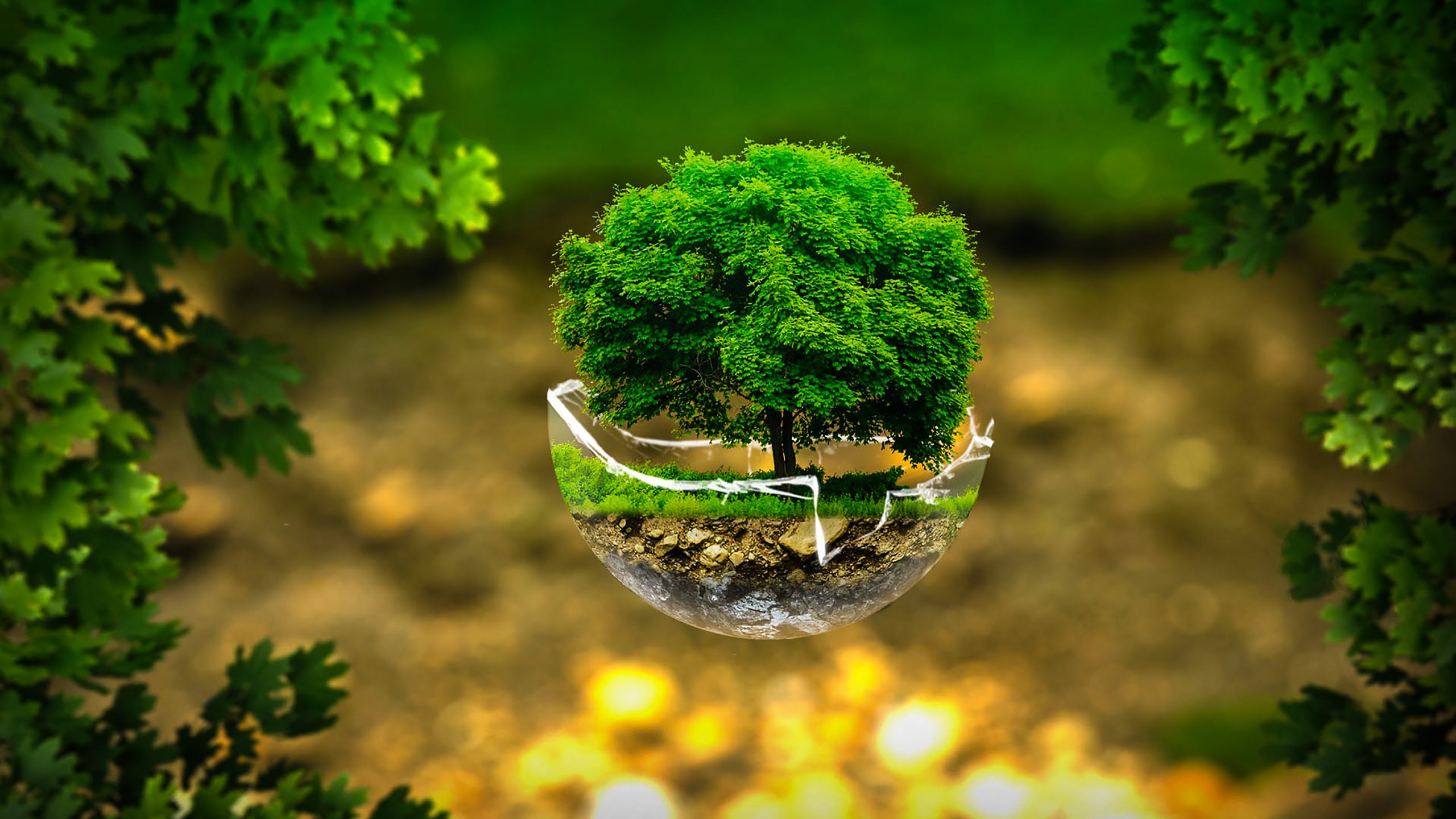
The environment plays a crucial role in sustaining life on Earth. It encompasses everything around us, including the air we breathe, the water we drink, and the ecosystems that house countless plants and animals. Understanding the environment and its intricate workings is essential for ensuring its preservation and our own well-being. In this article, we will delve into 19 fascinating facts about the environment that highlight its importance and the challenges it currently faces. From the alarming rate of deforestation to the impact of climate change on our planet, these facts will serve as a reminder of the urgent need for environmental awareness and action. So, let’s dive into the world of the environment and explore the wonders and issues that surround it.
Key Takeaways:
- The Earth’s atmosphere has layers that regulate temperature and weather, and it’s important to protect them to maintain a healthy environment.
- Deforestation, plastic pollution, and climate change are major threats to the environment, but by working together, we can find solutions and create a greener future.
The Earth’s atmosphere is composed of several layers.
The atmosphere is divided into five main layers: the troposphere, stratosphere, mesosphere, thermosphere, and exosphere. Each layer plays a crucial role in regulating temperature, weather patterns, and protecting life on Earth.
Deforestation contributes to climate change.
The loss of trees through deforestation reduces the Earth’s capacity to absorb carbon dioxide, a greenhouse gas responsible for global warming. It also disrupts ecosystems, leading to the loss of biodiversity and environmental balance.
The Great Barrier Reef is the largest living structure on Earth.
Stretching over 2,300 kilometers, the Great Barrier Reef is home to a diverse range of marine life. It is a UNESCO World Heritage site and is an essential ecosystem that provides habitats for countless species.
Plastic pollution is a major threat to marine life.
Millions of tons of plastic end up in the oceans each year, harming marine animals through ingestion and entanglement. It is crucial to reduce plastic consumption and promote recycling to protect our oceans.
The Amazon Rainforest produces 20% of the world’s oxygen.
The vast expanse of the Amazon Rainforest is known as the “lungs of the Earth” due to its role in oxygen production. It also plays a vital role in regulating the climate and housing an incredible diversity of plant and animal species.
Renewable energy sources are key to reducing carbon emissions.
Switching to clean energy sources like solar and wind power can help reduce our dependence on fossil fuels, decreasing greenhouse gas emissions and combating climate change.
The ozone layer protects life on Earth from harmful ultraviolet radiation.
Located in the stratosphere, the ozone layer acts as a shield, absorbing most of the sun’s ultraviolet radiation. The depletion of this layer due to human-made substances like chlorofluorocarbons (CFCs) poses a threat to human health and ecosystems.
Overfishing disrupts marine ecosystems.
Excessive fishing leads to the depletion of fish populations and disrupts the delicate balance of marine ecosystems. Sustainable fishing practices and conservation efforts are necessary to ensure the health and sustainability of our oceans.
Climate change is causing the melting of polar ice caps.
Rising temperatures are causing the polar ice caps to melt at alarming rates, contributing to global sea level rise. This not only poses a threat to coastal communities but also results in the loss of critical habitats for polar animals like polar bears and penguins.
Forests are crucial for carbon storage.
Forests act as carbon sinks, absorbing carbon dioxide and storing it through the process of photosynthesis. Protecting and restoring forests is essential in the fight against climate change.
Air pollution is a leading cause of respiratory diseases.
Exposure to pollutants in the air can have detrimental effects on human health, leading to respiratory issues, cardiovascular problems, and even premature death. It is crucial to reduce air pollution and promote cleaner sources of energy and transportation.
The Great Pacific Garbage Patch is a floating mass of marine debris.
Located in the North Pacific Ocean, the Great Pacific Garbage Patch is a vast accumulation of plastic and other waste. It highlights the urgent need for global efforts to reduce plastic consumption and improve waste management practices.
Biodiversity loss threatens ecosystems and food security.
The loss of biodiversity due to habitat destruction, pollution, and climate change has far-reaching consequences. It disrupts ecosystems, reducing resilience and affecting food production and human well-being.
The Earth’s temperature has been steadily rising since the industrial revolution.
The burning of fossil fuels and other human activities have led to an increase in greenhouse gas emissions, resulting in a rise in global temperatures. This phenomenon, known as global warming, poses significant challenges to the environment and humanity.
Water scarcity affects millions of people around the world.
Access to clean and safe water is a fundamental human right, yet many communities worldwide still struggle with water scarcity. Climate change, pollution, and overconsumption are exacerbating this issue, emphasizing the need for sustainable water management.
The ozone hole is showing signs of recovery.
The implementation of the Montreal Protocol, an international treaty aimed at phasing out ozone-depleting substances, has led to the gradual healing of the ozone hole. This demonstrates the effectiveness of global environmental agreements in addressing and solving environmental challenges.
The “greenhouse effect” is essential for supporting life on Earth.
The greenhouse effect is a natural process that helps trap heat in the Earth’s atmosphere, maintaining temperatures suitable for life. However, human activities have intensified this effect, leading to climate change and its associated impacts.
Environmental education plays a crucial role in creating a sustainable future.
By educating individuals about the importance of the environment and sustainable practices, we can foster a more environmentally conscious and responsible society. Environmental education helps promote informed decision-making and encourages actions that protect our planet.
Collaboration is key in addressing environmental challenges.
Tackling complex environmental issues requires the collective efforts of governments, organizations, communities, and individuals. By working together, we can find innovative solutions, implement sustainable practices, and create a greener and more sustainable future for generations to come.
Conclusion
The environment is a complex and vital system that directly impacts our lives. It is crucial for us to understand and appreciate the intricate balance within nature in order to protect it for future generations. In this article, we have explored 19 fascinating facts about the environment, ranging from the importance of biodiversity to the impact of climate change.
By recognizing the value of the environment and taking steps towards sustainability, we can make a positive difference. Whether it’s through conserving energy, reducing waste, or supporting eco-friendly practices, each individual has the power to contribute to a healthier planet.
Remember, every action counts. Let’s work together to preserve the environment and create a greener and more sustainable future.
FAQs
1. Why is it important to protect the environment?
Protecting the environment is essential because it sustains all life on Earth. It provides us with clean air, water, food, and resources. Conservation efforts also help maintain the delicate balance of ecosystems and preserve biodiversity.
2. How does climate change affect the environment?
Climate change leads to rising global temperatures, which, in turn, have severe consequences such as melting ice caps, rising sea levels, and extreme weather events. These changes disrupt ecosystems, negatively impacting plant and animal species and their habitats.
3. What is biodiversity?
Biodiversity refers to the variety of life on Earth, including all plant and animal species and their ecosystems. It is crucial for the stability and resilience of ecosystems, as each species plays a unique role in maintaining the overall balance.
4. How can I reduce my carbon footprint?
You can reduce your carbon footprint by adopting eco-friendly habits such as using public transportation, conserving energy at home, eating locally grown food, and recycling. Every small action contributes to a healthier and more sustainable planet.
5. How does pollution affect the environment?
Pollution, whether it is air, water, or land pollution, has detrimental effects on the environment. It harms wildlife, destroys habitats, degrades ecosystems, and poses serious health risks to humans. Taking action to minimize pollution is crucial for preserving the environment.
Was this page helpful?
Our commitment to delivering trustworthy and engaging content is at the heart of what we do. Each fact on our site is contributed by real users like you, bringing a wealth of diverse insights and information. To ensure the highest standards of accuracy and reliability, our dedicated editors meticulously review each submission. This process guarantees that the facts we share are not only fascinating but also credible. Trust in our commitment to quality and authenticity as you explore and learn with us.


